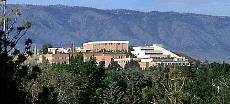
How Casper College uses Linux to teach computer science courses.

Casper College is located in the city of Casper, Wyoming. Its total enrollment stands at about 4,000, with students coming from Wyoming, 26 other states and 9 foreign countries. You can visit Casper College's home page at http://www.cc.whecn.edu/.
The college uses several Unix systems for e-mail, web services, student records and accounting. At present, the bulk of teaching is done using personal computers running Windows 95, which are networked together with Novell Netware. Netscape is available on most machines.
Casper College first used Linux as a teaching tool during the Spring 1995 semester when Ralph Anderl taught a short “Introduction to Unix” class. At first, Ralph used an SCO host, and later switched to a Linux host. Ralph worried that Linux might lock up when two dozen students simultaneously accessed it. His worry changed to amazement after Linux proved it could easily handle two dozen students and more. Linux found a home at Casper College and Ralph named the new Linux host “breeze”.
Why breeze? Well, Casper sees a lot of wind. Sometimes airline pilots come to Casper in order to train in windy conditions. The wind blows new pilots miles off course during landings, and even experienced pilots find it difficult to touch down smoothly. So, in honor of its wind, Casper College gives its hosts names such as: “wind”, “breeze” and “dust”.
LISP and C programming classes are taught directly on breeze by using a TELNET session on each student's computer. Other classes use home accounts on breeze as a private area where students can send and receive computer files containing handouts, tests and assignments.
I teach a class named “Computer Information Systems”, which introduces students to PC hardware, Windows 95 and applications such as PowerPoint. This is the first computer class for many students. Normally, e-mail is the best method to transfer tests, assignments and handouts between instructors and students. However, in this particular class, most students lack an e-mail account. So I set up a system that allows students to send and receive files using Netscape.
The first step involved setting up a web server on breeze. We used a CERN server at first and later switched to an Apache server. At this point, instructors could publish public course materials such as syllabi, HOWTOs and tests on Casper College's Intranet. However, ensuring private communication between instructors and students required a bit more work.
To ensure privacy, we created a breeze user account for each student which was readable only by the student. That allowed instructors, as root, to place confidential information such as test scores in each student's home directory. It also allowed students to send homework, assignments and tests to a private place.
Classroom experience taught me that students new to computers absolutely must use a web browser to transfer files. Although new students take to a GUI interface like a fish to water, a console interface such as FTP stops them dead in their tracks.
Fortunately, students can transfer files to or from their home directories using Netscape and opening a URL, such as ftp://don@breeze.
This causes Netscape to prompt for a password, then allows the user (in this case, Don) to access files in his home directory. To make things convenient we create mime types for Access, Excel, Lotus, PowerPoint, Schedule, Word and WordPerfect file types. We then add Netscape helper applications to each Windows 95 PC. Now, when a student clicks on a Lotus file, Netscape will automatically start up a Lotus application using the file as input.
Students take tests by using the Edit Document feature in Netscape Gold. This method provides the added benefit of giving them some practical experience with modifying web pages.
Remember that “Introduction to Unix” class I mentioned at the start of this article? Now Ralph uses Linux exclusively to teach the class. He also teaches out of a book which comes with its very own Linux CD-ROM. One class period is devoted to installing Linux on the personal computers in the lab. Many students also install Linux on their home computers. The UMSDOS file system comes in handy for students who are new to hard drive partitions, because it allows them to install Linux into a familiar file system.